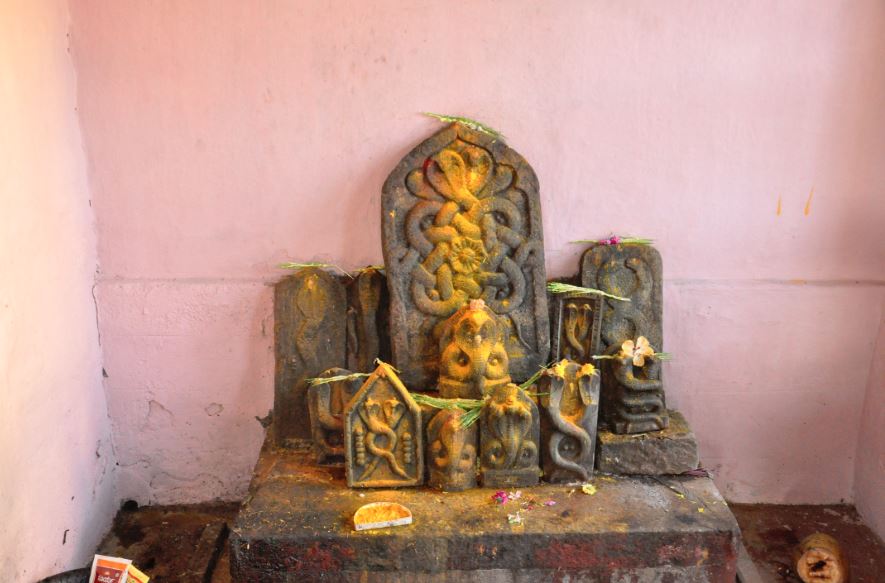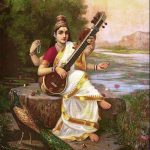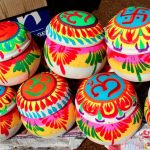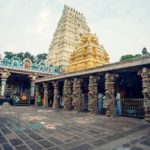If you are keen on experiencing the most unique festivals of India, do not miss out on the celebration of Nag Panchami. Observed throughout India, it is the worship of serpents or snakes that takes place on the fifth day of the Hindu lunar month of Shravan. On Nag Panchami, devotees typically bathe paintings or sculptures of snakes in milk and worship them. The festival dates back to the epic Mahabharata and is particularly significant for Hindu women.

What Is Nag Panchami?
Nag Panchami is a Hindu festival in which devotees worship snakes as deities. The Nag Panchami date falls between Nag Chaturthi and Nag Shashti, and occurs during Shukla Paksha (waxing moon phase) in the Hindu lunar month of Shravan. The date typically falls in either July or August. Nag Panchami is a highly significant festival as Hindus regard snakes to be far more powerful than humans. The festival has several local names across India including Bishari Puja, Naga Vardhini Panchami, Bhratru Panchami and many more.
Astrological Significance Of The Festival
In Hindu astrology, snakes are related to the nodes of the moon. Rahu is the snake’s head and Ketu is the snake’s tail. If an individual’s planetary placement is such that all seven major planets are between Rahu and Ketu, it denotes the Kalasarpa Dosha, or the defect caused by black snakes. Such an occurrence usually indicates hardship for the individual. Those with the Kalasarpa Dosha can combat it by celebrating Nag Panchami and praying to the snake deity for good fortune.
Legends Of Nag Panchami
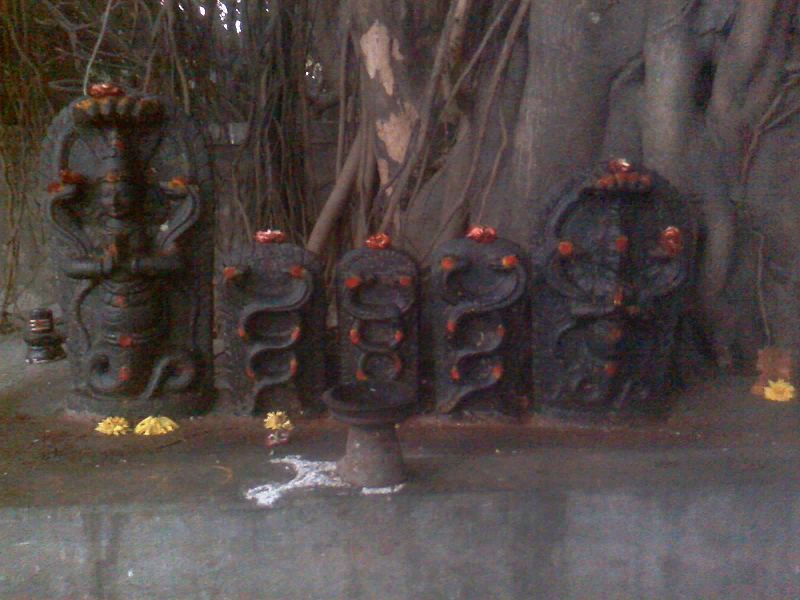
The Nag Panchami history is an interesting one and has its roots in the great Hindu epic, the Mahabharata. According to the legend, Janamejaya was performing a powerful ritual known as Sarpa Satra to avenge the death of his father from a snake bite. As he increased the tempo of the mantra he was chanting, all the snakes of the world were drawn into the fire – however, even Lord Indra was inadvertently pulled into the flames. Concerned, the other gods begged the snake goddess Mansa Devi to intervene. Mansa Devi then sent her son Ashtika to Janamejaya – Ashtika impressed the latter so much with his knowledge that he ceased the ritual. Ever since, Hindus celebrate Nag Panchami to mark this incident.
Folk Tales About The Snake Festival
Another Nag Panchami story is a folk tale. It relates that a farmer’s son once killed three snakes while ploughing the fields. The mother of the snakes sought revenge and fatally bit the farmer, his wife and both his sons. In despair, the daughter of the family offered the snake a bowl of milk and prayed for the restoration of her family. The snake was pleased by her devotion and pardoned the family, restoring them to life.
Celebration Of The Festival
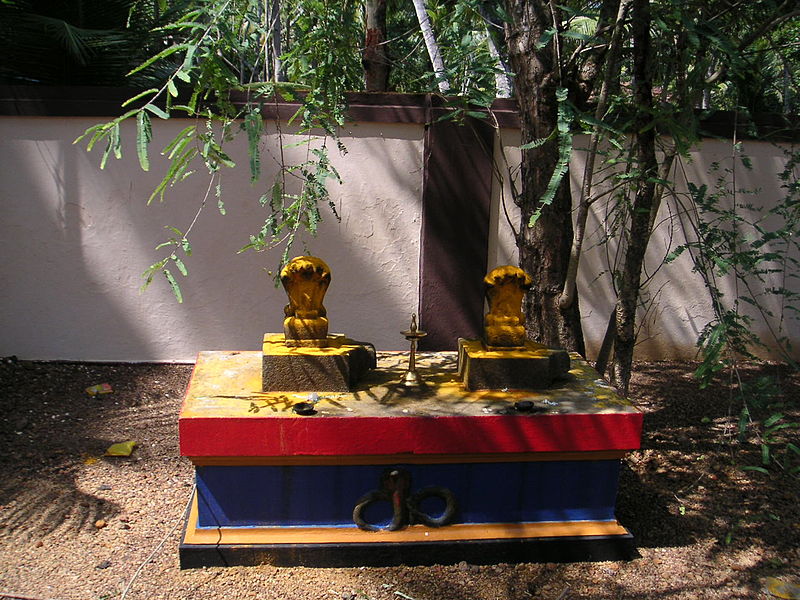
Nag Panchami is a highly important festival for many Hindus across India. On this day, devotees purify themselves by cleaning out their houses and wearing new clothes. They craft an image of a snak (Nag) out of cow dung and position it at their doorstep. They then bathe the snake image in milk and offer prayers to it to wash themselves of their sins. Other Hindus perform their worship by placing a lotus in a silver bowl and drawing rangoli in front of it to depict a five-headed snake. Mothers, in particular, worship snakes and chant mantras to pray for long lives for their children during Nag Panchami. According to the Garuda Purana, worshipping the snake on this day and then feeding needy Brahmins is a good way to ensure a long life.
Further Customs Of Nag Panchami
Many parts of India worship snake images made of wood or silver. Devotees also prepare various food items such as laddoo, rice dishes and sevai, and offer them to the snake idol along with sandalwood, milk and Kusha grass during Nag Panchami. While worshipping, they chant various mantras so that the snake deity grants their wishes. They also observe a fast all day long for enhanced piety and protection against snake bite. Many parts of India also host fairs and worship real snakes. They do so by enticing snakes out of anthills through lighting incense sticks and then offering milk to the snakes. Digging the earth on Nag Panchami is forbidden as the act could kill or injure snakes residing in that part of the ground.
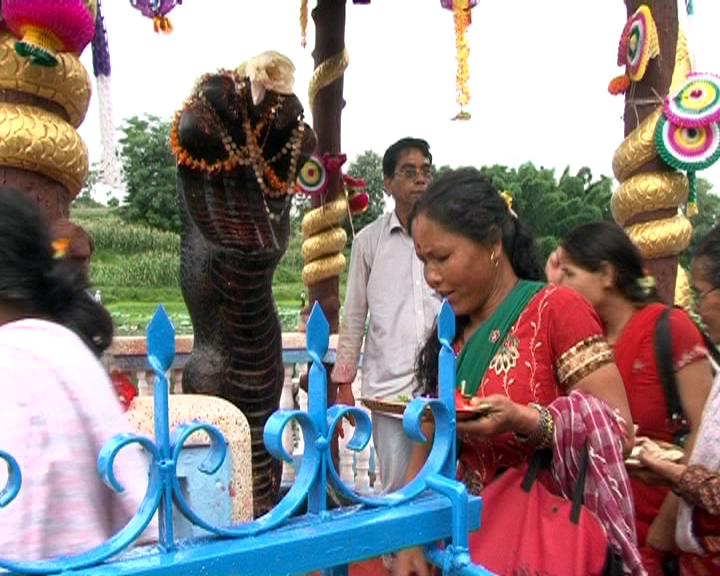
Whichever part of India you are in, you will see how significant Nag Panchami is for the devout Hindus. Snakes are symbols of both fear and awe. By worshipping snakes, Hindus believe that they can receive protection against snake bite and other dangers.




